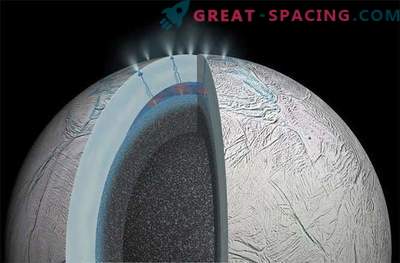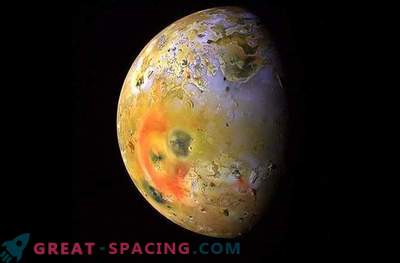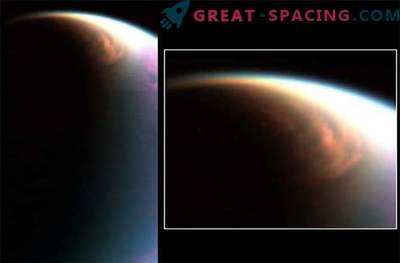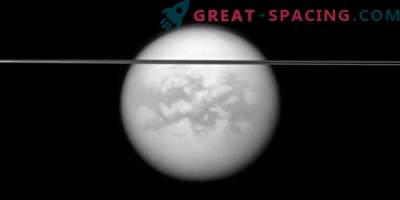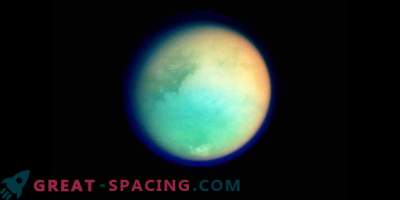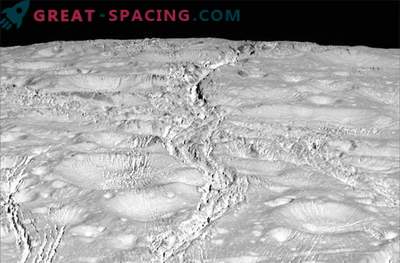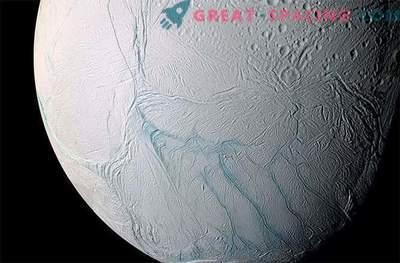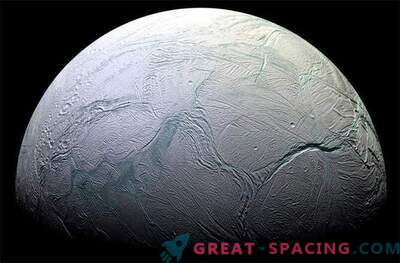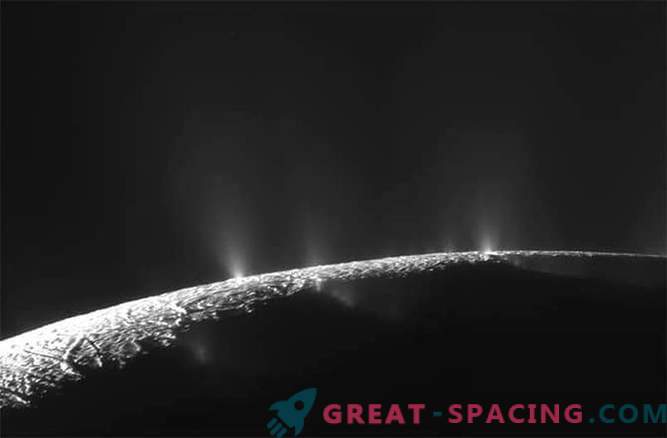
Over the next six months, NASA’s Cassini spacecraft, which is orbiting Saturn, will take the last photos of two ice satellites of the planet - one famous and one not very famous. He will fly past the erupting satellite Enceladus three times, which will make it possible to obtain the best quality images of the release of substances from geysers at the moment. It also allows you to look at another natural satellite of Saturn - Dione, where eruptions can also be observed.
Why are ice satellites so interesting to astronomers? The first reason is that they are more likely to find life within our solar system. It is believed that under the ice of these satellites is a large ocean. Under the surface of the satellites, warmed up as a result of gravitational interaction with the huge planet Saturn, in all likelihood there are microbes that are just waiting for people to study them.
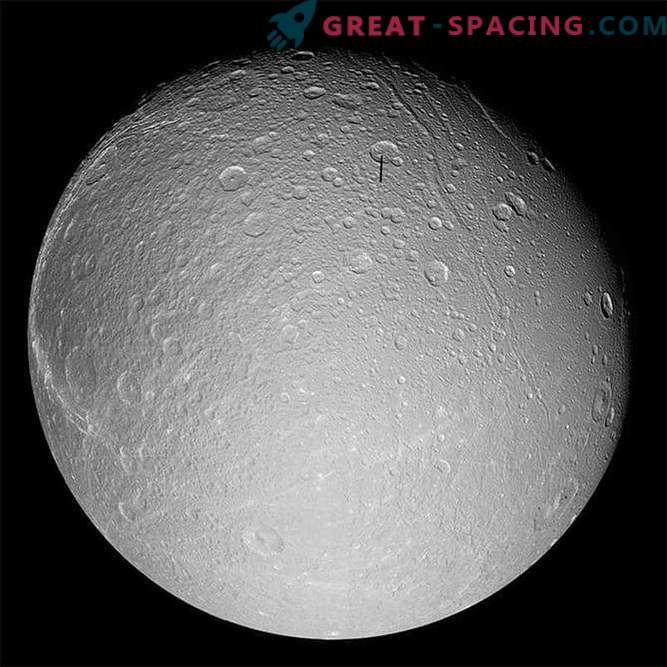
This photograph of Cassini, taken in 2006, shows tectonic formations on the surface of the satellite
The last look at the satellite will occur on August 17, when the Cassini spacecraft will make a series of gravitational measurements in order to better study the surface of Dione, as well as its ice shell. “There are intriguing hints that what is happening on the surface of Dion is the same thing that we previously discovered on Enceladus, but unfortunately there is no irrefutable evidence of this yet,” says Linda Spilker, the scientific director of the project. “Cassini”, which works in the laboratory of NASA for the study of jet engines. For the first time, geyser emissions were detected at Enceladus after the Cassini magnetometer helped to obtain evidence that the magnetic field lines do not descend to the surface.
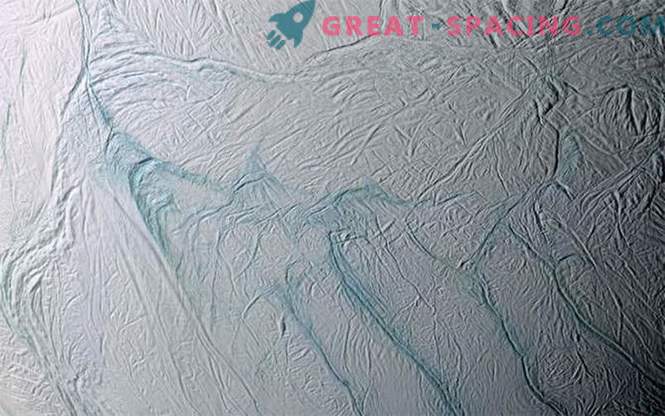
Tiger stripes on the surface of Enceladus
However, a similar phenomenon was not noticed on Dion. Linda Spilker explains that this may be due to the fact that this satellite is much larger. Substances of geysers are attracted as a result of gravitational effects, therefore they are much more difficult to recognize. By the way, scientists will have one more chance to study the satellite Dion from afar in detail, when it will pass opposite the Sun in 2017. If geyser eruptions do occur on the satellite, they will eclipse the star's light.
As for Enceladus, the next three flights are scheduled for the second half of 2015. On October 14, it is planned to get a view of the North Pole, a detailed study of geyser emissions is scheduled for October 28, and on December 19, with the help of Cassini, they study the thermal environment of the South Pole.

Titan and Tethys' tiny satellite in the background
At the moment, the winter period is observed at the South Pole of the Enceladus satellite, which will allow a detailed study of the heat emitted by the so-called “tiger stripes” in this region. In the process of studying the eruptions, it is planned to measure the amount of gas and other particles, as well as determine the place that is the source of the plume. There is a theory that water from the ocean’s bottom of the satellite comes to the surface through cracks and heats up as a result of interaction with the stone core of the planet, after which it erupts in the water-vapor state and interacts with cold water. This is confirmed by the fact that nanosilica particles were found among geyser emissions. Such flights around Saturn’s moons are possible due to the interaction with its huge satellite Titan, one of the largest satellites in the solar system (it almost reaches the size of the planet Mercury), which is also of interest to scientists due to the large amount of ethane and methane in its ecosystem. But not only the size of Titan makes it unique - on this satellite, scientists discovered lakes with liquid that they have not yet been able to see in some other place in the solar system. The space probe "Cassini" during the study of Titan, taking advantage of its gravity, which allows him to study other satellites.
